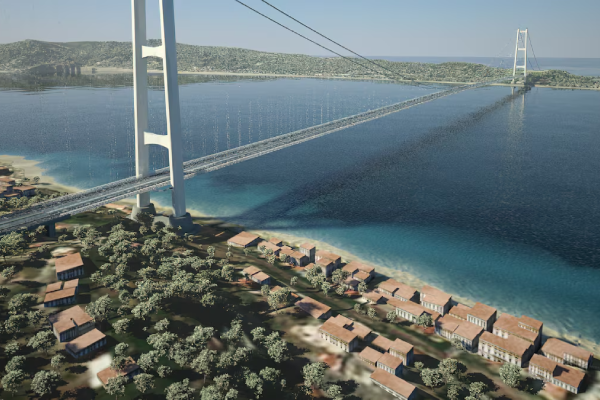Italy has approved the construction of the world’s largest suspension bridge, connecting the Italian mainland to Sicily, in a massive 13.5 billion euro ($15.5 billion) infrastructure project that has been long delayed due to concerns about its scale, earthquake risks, environmental impact, and the possibility of mafia interference.
Following approval by an inter-ministerial commission that oversees strategic public investments, Transport Minister Matteo Salvini declared at a press conference in Rome that the Strait of Messina Bridge will be “the biggest infrastructure project in the West.”
The bridge “will be an engineering symbol of global significance,” according to Premier Giorgia Meloni.
As billions more are invested in roads and other infrastructure projects to go along with the bridge, Salvini highlighted studies that show the project will boost growth in southern Italy, which is now experiencing economic stagnation, and create 120,000 jobs annually.
After Italy’s court of audit gives its approval, preliminary work may commence in late September or early October, with building anticipated to begin the following year.
Read Also
According to Salvini, the bridge should be finished between 2032 and 2033 despite administrative hold-ups.
The Strait of Messina Bridge has been approved and canceled multiple times since the Italian government first solicited proposals in 1969.
Premier Giorgia Meloni’s administration revived the project in 2023, and this marks the furthest stage the ambitious project— first envisioned by the Romans — has ever reached.
Nearly 3.7 kilometers (2.2 miles) in length, with a suspended span of 3.3 kilometers (more than 2 miles), the Strait of Messina Bridge would be 1,277 meters (4,189 feet) longer than the Canakkale Bridge in Turkey, which is presently the longest.
With three car lanes in each direction and a double-track railway on either side, the bridge could handle 200 trains a day and 6,000 autos per hour, cutting the time it takes to cross the strait by ferry from up to 100 minutes to 10 minutes by car.
Salvini said that trains would reduce transit time by two to twelve hours.
The project could help Italy fulfill NATO’s aim of raising defense spending to 5% of GDP, as the government has stated that the bridge will be classified as defense-related, allowing it to meet a 1.5% security component.
Italy claims that the bridge would create a critical route for quick troop deployments and equipment deployment to NATO’s southern flanks, classifying it as “security-enhancing infrastructure.”





